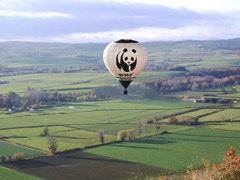Analytics, Baltic, Ecology
International Internet Magazine. Baltic States news & analytics
Monday, 29.12.2025, 13:59
WWF: Baltic Sea ecosystem is on the verge of destruction
 Print version
Print version |
|---|
"In the Baltic Sea, the marine dead zones could cause a total collapse of the entire ecosystem if their spread is permitted to continue," head of the WWF's Swedish branch, Lasse Gustavsson, said in a statement, asking the Baltic Sea region to start an urgent and active fight against the pollution.
The main reason that causes spreading of the marine dead zones is the pollution and excessive amount of phosphorus that comes from agriculture and other runoff.
Nitrogen and phosphorus in the sea water act as fertilizers and enhance the growth of algae.
When the excess algae and other organisms die and sink to the bottom, they are decomposed by bacteria that suck up all the available oxygen, in a process called eutrophication.
In the marine dead zones there is too little oxygen for fish to breath. Therefore fish die out, destroying the marine ecosystem.
Seven out of ten world's largest marine dead zones are located in the Baltic Sea, which is on a verge of an ecological catastrophe.
In large areas of the Baltic Sea, where a normal biota used to be found previously, now only algae are growing.
The dead marine zones take up 70,000 square kilometers globally.
The toxic substances have been accruing in the Baltic Sea for several decades, especially during the Soviet Union period. The toxic substances' concentration in the Baltic Sea is much higher than in open seas and oceans. Several decades are needed for water to exchange between the Baltic and the North Seas.








 «The Baltic Course» Is Sold and Stays in Business!
«The Baltic Course» Is Sold and Stays in Business!

